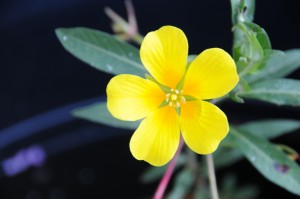Crackdown on invasive non-native plants and animals welcomed
 WWT has welcomed today’s announcement of a Europe-wide crackdown on non-native invasive plants and animals which are damaging wildlife in the UK and across Europe.
WWT has welcomed today’s announcement of a Europe-wide crackdown on non-native invasive plants and animals which are damaging wildlife in the UK and across Europe.
A new European-wide Regulation will aim to better prevent the spread of invasive species, of which there are currently over 12,000 in Europe. Until now, there has been no EU-wide coordinated response to the increasing threat posed by invasive non-native species, which have been able to cross international borders with impunity. The level of action across the EU has at best been patchy resulting in weak and uncoordinated protection, and wildlife across the EU has suffered as a result.
The proposed new Regulation would oblige countries to carry out surveillance and risk assessments; identify how species get in and out of their territory and tackle those pathways; identify species of concern; set up early warning systems; and establish plans for rapid action.
Britain faces several threats to its native plants and animals, despite the barrier of the English Channel. They include signal crayfish, Asian hornet, harlequin ladybird and South American water primrose which forms dense mats that choke native fish and plants of oxygen, nutrients and light. Invasive plants and animals are estimated to cost the British economy at least £1.7bn, and the European economy more than *£10bn, to control and manage each year.
If spread isn’t prevented, the cost can increase drastically. For example it’s estimated the current cost of controlling water primrose in its footholds in Britain is £73k, but this would rise to around £250m if it became widespread.
WWT’s Head of Conservation Policy, Carrie Hume, said:
“Britain’s much-loved plants and animals are under relentless attack from invaders, as headlines about ash-tree ‘dieback’ - a fungus which originated in Poland - have shown.”
“The Government has already taken positive steps, like banning the sale of some damaging invasive plants. But this is not a problem the UK can tackle on its own, and Europe as a whole is a long way off the vision of a Europe-wide defence system, and that leaves the UK’s wildlife vulnerable.”
“This Regulation is great news because it highlights the need for countries to work together to prevent the spread of invaders. If accepted across Europe, it would mean countries working together to identify how and where species cross borders, assessing the risks and taking action to prevent expensive damage before it happens.”
“Although the Commission has proposed limiting these measures to just 50 out of the 1,500 or more damaging invasive non-native species present in the EU, many of which represent a serious threat to the UK’s wildlife. Conservation groups will be working to ensure this Regulation is effective in tackling all invasive non-native species across Europe.”
The Government, plant suppliers, conservationists and other water users have already teamed up to help the British public find out how they can avoid accidentally spreading non-native species through two campaigns. Details of ‘Be Plant Wise’ for gardeners, or ‘Check-clean-dry’ for boaters and anglers, in addition to information on species to look out for, can be found at www.nonnativespecies.org

